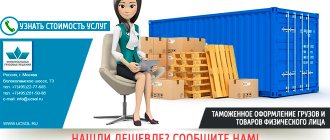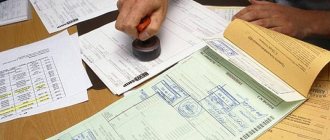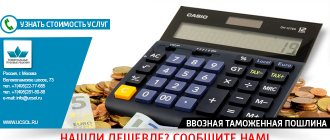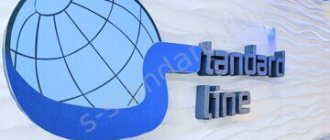When crossing the border of any state, the cargo is subject to customs control. . The declaration, which is submitted to the customs authority when registering import/export, indicates such a parameter as customs value. Based on this value, the amount of customs duties and other fees is calculated.
The customs authority is constantly vigilant to ensure that the customs value is not underestimated (after all, this directly affects the volume of payments collected for the budget). However, even when the declarant indicates the real and not the underestimated value, the customs authority may doubt the fairness of the price and make an adjustment to the customs value.
What is KTS?
In essence, adjusting the customs value is nothing more than a recalculation of the customs value of the goods indicated in the documents by the importer or his customs agent, in the event of customs disagreement with the data provided.
If the declared value of goods imported into the country is lower than that established in the relevant risk profiles (internal customs documents indicating the country of origin of the goods, the ratio of net and gross weight, average cost per kg, etc.), customs has the right to require a full decoding of all expenses incurred by the declarant, with documentary justification:
- Transport and forwarding services;
- Commissions;
- Brokerage services;
- Insurance;
- Licensing, etc.
A discrepancy between the data in the declaration and the submitted documents invariably leads to an adjustment of the customs value.
The result of the CCC is additional taxes and duties, delays in delivery, and violation of the terms of the contract with customers. These circumstances not only threaten serious losses to the reputation of the enterprise, but can also lead to lengthy legal proceedings.
We'll take care of all the paperwork involved in cargo customs clearance!
Free consultation
Features of KTS
CTS can be conditional and final:
- Conditional adjustment of customs value
. If the need for adjustment arises, customs carries out additional checks, but ensures the conditional release of goods, or the release of goods with a security payment (these amounts are reserved in the customs account). The importer may agree to the adjustment and pay the indicated amounts, but may also withdraw the declarations - in this case, the cargo remains in customs until the circumstances are clarified. If a decision is subsequently made on the final CTS, the reserved money goes to the budget, and the declarant becomes obligated to pay penalties and fines accrued for the period when the funds were in reserve. - Final adjustment of customs value
. The amounts of customs duties calculated for additional payment are immediately debited from the declarant’s account. Customs officers adjust the customs value, the declarant agrees with it. Additional checks are not assigned, appropriate changes are made to the declaration, the importer pays customs duties and fees based on the declared customs value.
Practice shows that most often importers agree with the CCC - this saves time with minimal material and time costs.
Methods used to determine customs value
To calculate the vehicle value of goods, importing organizations, as well as customs authorities, are guided by an international agreement between the member countries of the Customs Union. The amount of customs duties and tax payments to the budget directly depends on the calculated value of the customs value, therefore customs representatives try to prevent its underestimation by clearly monitoring compliance with legislation in this area.
Currently, 6 methods are used to determine the customs value of goods imported into the Russian Federation:
- 1. At the cost of the transaction with imported goods
. The costs actually incurred (or payable) at the time of crossing the border for the purchase, transportation, insurance, licensing of goods, etc. are taken into account. - 2. At the cost of a transaction with identical goods
. The essence of the method is simple: the customs value of goods subject to assessment is recalculated according to the value of identical goods that have already passed customs control. This method is applicable if a number of conditions relating to identical goods are met:
- They were sold to the importer for import into Russia;
- They were imported into the country at the same time as those being assessed, or no earlier than 90 calendar days before their importation;
- They were imported under the same conditions and in the same weight, volume or quantity as those being valued (otherwise the declarant is required to make certain adjustments).
- 3. At the cost of the transaction with homogeneous goods
. The calculation procedure is the same as in the previous method, with only one amendment: homogeneous goods - goods that have similar characteristics, perform similar functions, are made from similar components, but they are not identical. If necessary, similar products can replace each other. - 4. Based on cost subtraction
. The calculation takes into account the cost of similar (identical or homogeneous) goods sold in their original (not processed, not modernized) state in Russia in the largest consignment. Expenses related to the domestic market and not included in the customs value (transportation within the country, sales costs, etc.) are necessarily deducted from the price. - 5. Based on cost addition
. The production costs of the goods being valued are taken into account, and the amounts of profit and costs of selling the goods being valued are added to them. Naturally, it can be quite difficult to obtain and verify such information, so the customs value calculated using this method is most often subject to strict control. - 6. Backup method
. It is based on expert assessments and special calculations, which use the price at which the goods being valued are sold in Russia. - The prices indicated in the declaration are lower than the risk profile data;
- Product data turns out to be fictitious;
- The method for determining the customs value was chosen incorrectly;
- New documents have appeared, according to which the cost of a product changes or its characteristics change.
If the need arises, CCC, customs authorities are also regulated by the above methods. Moreover, you cannot choose any of them - you need to start with the first, if it is not applicable in a given situation, you can resort to the second, etc. The only exceptions are 4 and 5 - they can be swapped.
Who makes decisions about CTS and why?
In the process of reviewing the declaration, the customs inspector may accept the calculation of the importing enterprise, or may assign a CCC procedure.
The customs officer prescribes a procedure for adjusting the customs value in the following cases:
The importer may initiate CCC in cases where it is necessary to make certain adjustments to the submitted documents.
Practice shows that the initiator of the CCC, as a rule, is the customs authority. Customs value control is carried out as follows:
- The declarant indicates all data about the product (country of origin, name, weight, etc.), and also calculates its customs value;
- The customs inspector passes the submitted data through a program that automatically compares it with data from the corresponding risk profile;
- If necessary, a full inspection of the goods is carried out.
In general, the procedure for declaring, control and adjustment of customs value is determined by a number of legislative acts, in particular the Customs Code of the Customs Union and the decision of the Customs Union Commission dated September 20, 2010 No. 376 (as amended on November 3, 2015) “On the procedures for declaration, control and adjustments to the customs value of goods."
All necessary reconciliations and calculations are carried out by the declarant independently (based on the instructions of the customs authorities), and the importer is also obliged to provide the originals of all supporting documents. Having problems adjusting the customs value? Not sure that you have been assigned the correct CTS?
Contact EIG professionals, because solving foreign trade problems is our job!
Or contact us by phone,
Or via email
Customs value – 6 methods of determination
Methods for determining the customs value of goods are arranged in a hierarchical order. If for some reason the first method did not give a clear definition of the customs value of the goods, then the second method is used, if it did not give an answer, then the third and so on in turn until the desired result is found - this is the procedure for determining the customs value.
First method.
According to the first method, the customs value of the goods is determined based on the sum of the cost of the goods (determined by the invoice) and the cost of its delivery to the border of the Customs Union (based on transport documents, as well as an agreement with the transport company). This is the most common method. Based on the received customs value, the amount of customs duty and VAT is calculated.
Second method.
If for some reason the declarant is unable to confirm the value of the goods (there is no invoice or other necessary documents), then the customs value is determined based on an analysis of transactions with identical goods. By identical goods, customs legislation means goods that are identical in all respects. They may have minor differences, but their physical characteristics should not affect their primary function. And identical goods must be commercially interchangeable.
Third method.
If the analysis of transactions with identical goods does not allow determining the customs value, then transactions with goods that are not completely identical are studied. We are talking about homogeneous goods, that is, goods that have similar characteristics, consist of similar components and perform the same function.
Fourth method.
The algorithm for calculating the customs value of goods according to the fourth method is based on an analysis of the prices at which identical or similar goods were sold in the customs territory of the Customs Union. In this case, from the resulting amount, costs typical only for the domestic market are subtracted (customs duties, transportation costs, other expenses incurred by the seller of an identical or similar product when selling it). It is important to remember that for the analysis it is necessary to take those transactions for which the largest aggregated lot of goods was sold (in this case, the goods had to be sold in an unchanged condition).
Fifth method.
The analysis takes into account the cost of production of goods (product cost). To the amount received, it is necessary to add the amount of expenses and profits characteristic of the sale of the goods being valued in a member country of the Customs Union.
Sixth method
is a backup. If none of the five previous methods made it possible to determine the exact size of the customs value of the goods, then the prices for this product in the domestic market are analyzed, that is, the prices at which these goods were previously sold within the country under the conditions of normal trade and competition. Based on the data obtained, expert assessments are carried out and calculations are made of the currently objective customs value of the goods.
Deferred customs value. On April 12, 2016, the Decision of the Board of the Eurasian Economic Commission No. 32 “On approval of the procedure for applying the procedure for deferred determination of the customs value of goods” was published. By issuing this document, the Commission of the Eurasian Economic Union has made a big step towards foreign trade participants, because from now on they are allowed to postpone the determination of the customs value of declared goods for up to 15 months! So far, the principle of deferred customs value is not always applied in all cases. You can read more about the document here (Watch).
Declaration of customs value of goods. The abbreviation DTS-1 means Declaration of the customs value of goods. This is a document that is filled out by the declarant and submitted to the customs authority along with the customs declaration for goods - DT. The completed DTS-1 form must contain information about the customs value of the goods and the method by which it was determined. In other words, by submitting the Declaration of Customs Value form, the foreign trade participant declares the customs value of the goods, that is, declares it to the customs authority. At the same time, it is necessary to recall that all data stated in the declaration must be documented. In a number of cases stipulated in the customs legislation of the EAEU, a declaration for the customs value of goods is not filled out.
Procedure for adjusting customs value
The CTS procedure is carried out in several stages:
- Preparation. At this stage, a deeper check of documents for the goods is carried out, as well as control of the goods themselves;
- Next, the customs office determines inaccuracies in the declaration and provides an approximate calculation of the customs value and security deposit.
- If necessary, additional documents may be required.
- After the inspection, customs makes a final decision on adjusting the customs value, and a decipherment of the grounds for this procedure is required.
- The final calculation of customs and tax payments is mandatory, and the amounts of additional payment or refund are determined.
CCC forms can be filled out by both customs inspectors and the company’s customs representative - it all depends on who initiates the verification and adjustment.
According to the classifier of customs value adjustment features, each of the CTS options is assigned a separate code.
Adjustment of the customs value after the release of goods can be requested within 3 years. In this case, there is no need to make a security payment, and the initiator of the inspection can be either the customs office or the declarant.
The deadline for releasing goods established by law is 1 day from the date of registration of the customs declaration. If the CCC procedure is in progress, the importer is given 60 days to provide all the necessary documents for verification. After submitting the documentation to customs, 3 days are given for its consideration and determination of the final customs value.
What documents are provided when justifying the CTS?
To determine the customs value of imported goods as accurately as possible, customs will require the following documents:
- Documented data on prices for goods on the manufacturer’s market and on the Russian market;
- All information about the product: its technical characteristics, properties, data from the manufacturer, etc.;
- Any payment documents that can confirm prepayment of goods;
- Supplier price lists;
- Agreements with transport companies for the delivery of goods;
- Agreements concluded with the product supplier;
- Export declaration of the country of origin of the product.
The more documents an importing organization can submit to customs, the higher the chance of avoiding additional time and material costs.
Is there no method against scrap?
Adjustment of customs value is a fairly common occurrence and no one is immune from it. Representatives of the customs service, based on the control values for a particular product, increase the value declared by the foreign trade participant. Such decisions are not always fair and indicate the declarant’s unseemly intentions.
If the declarant was unable to prove his value sufficiently convincingly from the point of view of the customs authority, and at the same time he does not agree with the adjustment of the customs value, then he has only one option left - to the arbitration court. However, during the period of proceedings, he will have to provide the customs authority with a deposit, which will take into account the duties calculated by customs.
Cost adjustment is not a rare procedure in practice. To avoid possible troubles, try to plan for everything and have with you documentation confirming the value you specified. At the same time, it should include everything that is in one way or another connected with the product. A KVT customs representative will help you prepare the necessary documents so that your value is not subject to adjustment by the customs authority. We are accustomed to defending the interests of our clients before customs until the very end and justifying the trust placed in us.
See also:
- Customs value of goods
- How to pay less!
- Documents required for import
Appeal against adjustment of customs value
Despite the fact that the customs value is calculated directly by the importer, the customs office carefully checks and verifies this data with its internal documents. If it turns out that the vehicle is undervalued, a procedure for adjusting the customs value is carried out.
According to customs legislation, an appeal against the results of the CCC is possible in court if the declarant disagrees with the decision of the customs authorities.
Documents required to appeal a customs decision in court:
- Application to recognize a decision made by a customs authority as illegal. The application is drawn up according to strict rules and contains the following information:
- Full name of the customs authority that made the decision on the CCC;
- Full name, date and number of the document (decision) subject to appeal;
- Names of all legal acts that this decision contradicts;
- All legitimate interests and rights of the importing organization violated by this decision are listed;
- In conclusion, the organization is required to recognize this decision as illegal.
- Any documents confirming the costs incurred by the declarant (checks, payment documents, invoices, contracts, specifications, etc.)
The court may declare the decision of the customs authorities illegal if the CTS was made on the basis of customs data that is exclusively statistical in nature and used only in cases where the declarant does not have certain documents confirming actual costs.
Based on the decision made by the court, the customs authorities recalculate the vehicle and return the amounts overpaid by the declarant (or submit a calculation of the additional payment of customs duties by the importer).
The time limit for challenging the decision of the customs authorities in court is 3 months.
By a court decision, the customs authorities may reimburse the declarant for all expenses incurred by him to appeal the unlawful decision (if all supporting documents are available).
Customs value of imported goods
The customs value of imported goods is determined by any of the six methods above. The declarant can perform this work independently, or can use the services of customs professionals. We are talking about companies - customs representatives. Calculation of the customs value of goods is included in the standard package of services they provide. Our company “Universal Freight Solutions” is an official customs representative - a customs broker, and if you need to quickly and correctly determine the customs value of the imported goods, then we are ready to help you! All work is performed on the basis of a brokerage agreement, and we bear full legal responsibility to the client and customs!
We are sure that the timing, cost and quality of services will pleasantly surprise you!






